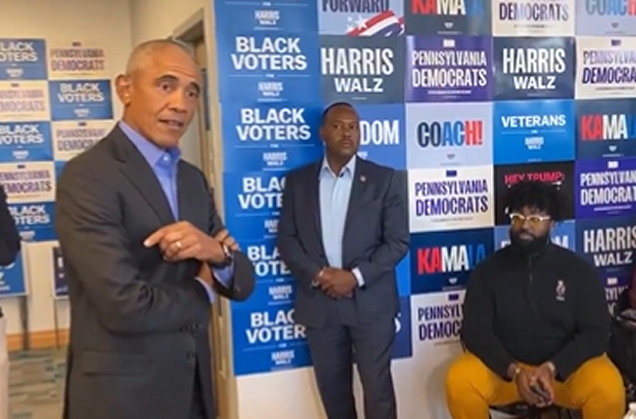Democrats are increasingly concerned about Vice President Kamala Harris’s electoral prospects in Pennsylvania, a pivotal battleground state. This anxiety is underscored by former President Barack Obama’s recent campaign appearance in Pittsburgh, particularly targeting Black male voters. The urgency of this effort suggests that key Democratic leaders recognize a significant challenge in voter support for Harris. Despite Obama’s star power and his established voter appeal, the underlying sentiment among voters may not be swayed by high-profile campaigning alone. If constituents are yearning for substantial change, a charismatic speech may not be sufficient to alter their perception or enthusiasm.
During his rally, Obama aimed to bolster Harris’s campaign while simultaneously criticizing former President Trump on various fronts, including health care, abortion, immigration, and the Capitol insurrection on January 6. By highlighting these issues, Obama sought to frame the electoral contest not just as a choice between candidates, but as a reflection of broader values and policies that resonate with liberal constituents. His strategic focus indicates an acknowledgment of the competitive nature of the race, as polls show Harris and Trump in a dead heat within the state. Yet, the effectiveness of such rallying cries remains uncertain, particularly given the current discontent among voters.
The Obama campaign event also featured poignant appeals to empathy, particularly regarding those impacted by recent hurricanes, outlining the importance of effective government response. These compassionate narratives were likely intended to resonate with many voters who rely on government support during crises. However, they also reveal an essential critique of Trump’s claims surrounding disaster management, which has become a focal point in contemporary political discourse. Despite these attempts to connect with voters, there was a noticeable tone of anxiety in Obama’s delivery, suggesting that he, too, is not entirely confident in the direction the campaign is headed.
Reactions from attendees indicate a blend of cautious optimism and skepticism. Many may appreciate the former president’s efforts but remain unconvinced that Harris can effectively mobilize the support needed to secure a victory against Trump. The subdued enthusiasm among specific demographic segments, such as Black men, presents a particularly troubling issue for the Harris campaign. Obama’s acknowledgment of this lack of enthusiasm signals a need for urgent action to address concerns from these key voters, emphasizing the crucial role they play in determining electoral outcomes.
The party’s decision to utilize high-profile figures like Obama communicates a clear message: the political stakes are significant, and the necessity for reinvigoration among the electorate is pressing. It reflects a broader strategy among Democrats to shore up support in regions where they potentially face headwinds. However, the reliance on surrogates raises questions about the fundamental appeal of the candidates themselves. If they cannot inspire confidence even when backed by influential figures, the campaign will have to grapple with deeper ideological or emotional disconnects with the electorate.
Ultimately, the situation in Pennsylvania encapsulates a larger narrative within the Democratic party—a point of reflection on their messaging, coalition-building, and voter engagement strategies. As they head into the final month of campaigning, the need for introspection and decisive outreach becomes even more pronounced. The apprehensions surrounding Harris’s candidacy in Pennsylvania are indicative of broader challenges facing Democrats as they navigate a complex political landscape marked by shifting voter expectations and an ever-evolving electorate. The forthcoming weeks will be telling, as Democrats scramble to solidify their chances against a resurgent Republican presence, particularly embodied in Trump’s continued influence over the party and his core supporters.

